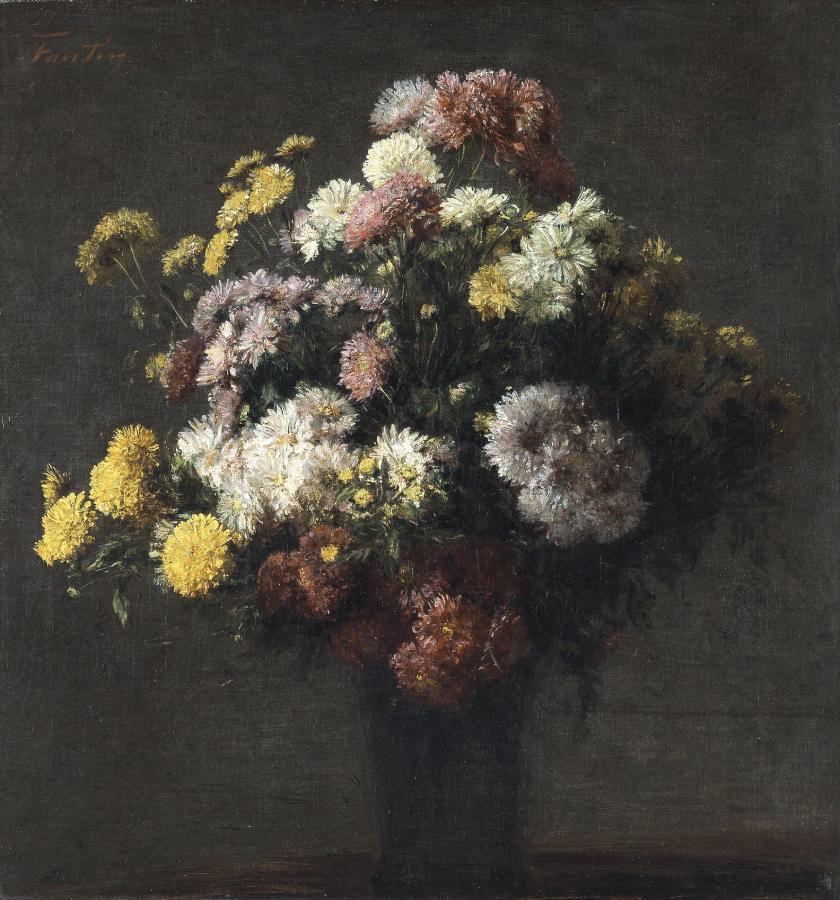Fantin-Latour, Henri (1836-1904)
Chrysanthèmes dans un vase (Vase with Chrysanthemums)
s.d.
Oil on canvas, 42.5 x 39.5 cm
Museo Thyssen-Bornemisza, Madrid
Henri Fantin-Latour achieved fame through his portraits of fellow artists and intellectuals of the day, as well as family members and patrons. During the last thirty years of his life he left Paris and retired to the country house where his wife had spent her childhood. Here the flowers in the garden became the principal subject of his work. In a methodical manner, Fantin-Latour composed the floral arrangements that he painted against plain backgrounds in his studio. The vases are particularly noteworthy and were sent to him by his London dealer. The artist would choose certain vases to accompany particular flowers, stalks and leaves. In the case of the present painting, Fantin-Latour arranged a large bunch of yellow, white, lilac, pink and red chrysanthemums that occupy the entire pictorial space. The artist’s passion for music has led to the suggestion that these combinations of flowers can be read as studies in harmony. (CM)
Fantin-Latour, essentially a Realist painter, comes close to Romanticism in certain aspects, such as the glow that emanates from his paintings. The huge possibilities of flowers as a source of inspiration for his painting and the great refinement he achieved in this genre can be seen in this Vase with Chrysanthemums. It is one of the most exquisite flower paintings that earned Fantin his enormous reputation beginning in 1864, the year he showed them for the first time at the Royal Academy in London. Fantin combines an almost photographic precision in the rendering of each flower with a dramatic glow that gives the picture an unnatural luminosity. The chrysanthemums are arranged in a disorderly but harmonious manner against the dark background and, as Sarah Whitfield points out, this slight sense of unreality conveyed by the painting “is heightened by the treatment of the vase, which all but disappears into the background, leaving the flowers suspended in darkness.”
The work has generally been identified as the one featured in the catalogue of Madame Fantin-Latour entitled Flowers and signed and dated 1875, even though neither the size nor the description of the latter match those of the painting in the Thyssen-Bornemisza collection.
Paloma Alarcó (T-B)
